Storms & Cloudy Nights Continue, Other News
Posted: 31 July 2022
Had a small rainshower to the west Thursday afternoon, 14 July 2022. One of my old webcams picked up a lightning bolt just after sunset.
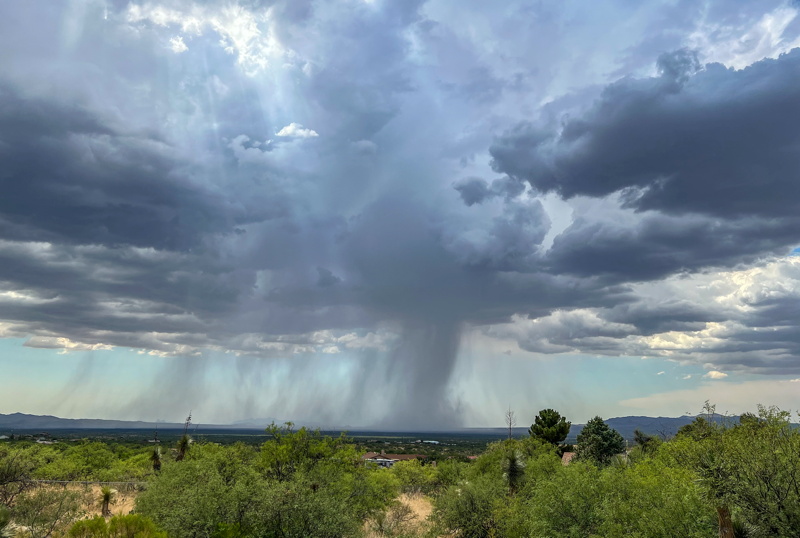
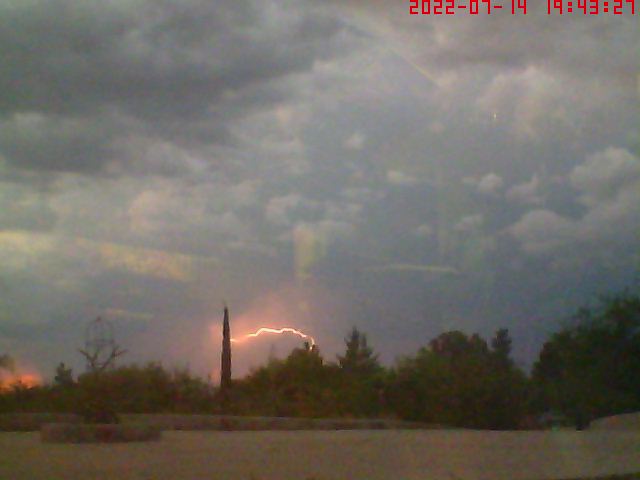
Friday night, 15 July, had a nice Monsoon thunderstorm with a half inch of rain in 20 minutes, with a total rainfall of 0.55". Saturday, 16 July, was clear until mid-afternoon when Monsoon cloud buildups began appearing. The Monsoon Season pattern continued on Sunday, 17 July, with moderate thundershowers late in the afternoon (0.51"). One of my webcams captured this nice lightning display at sunset.

Monday, 18 July, I gave a talk at the Oracle Community Center about this September's David H. Levy Arizona Dark Sky Star Party. Everyone was excited to learn more about this awesome event coming to Oracle.
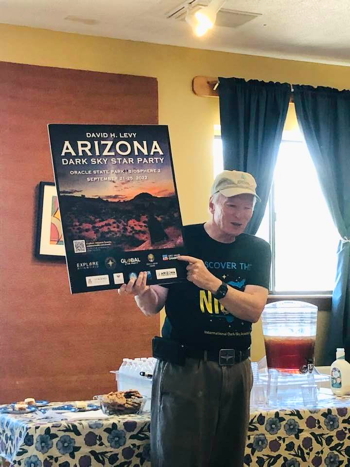
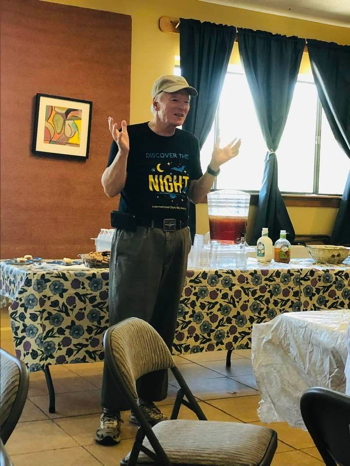
Photos courtesy of Ellie Brown
Tuesday morning, 19 July, I discovered that the observatory GFCI outlet had tripped for some reason. I reset it and power was restored. Perhaps high humidity from one of our recent Monsoon storms tripped it, although storms have never tripped the GFCI before. There was a brief electrical grid power glitch the night before, so maybe that tripped it. The GFCI outlet was last replaced in December 2019. Since only the Air Conditioner has been running during this cloudy period, I hope it is not the culprit. I monitored the observatory power for a few days and the GFCI never tripped. So the power glitch was the likely culprit.
Cloudy nights continued. Friday evening, 22 July, had nice very bright arcs of a double rainbow beyond my Explore Scientific weather station.
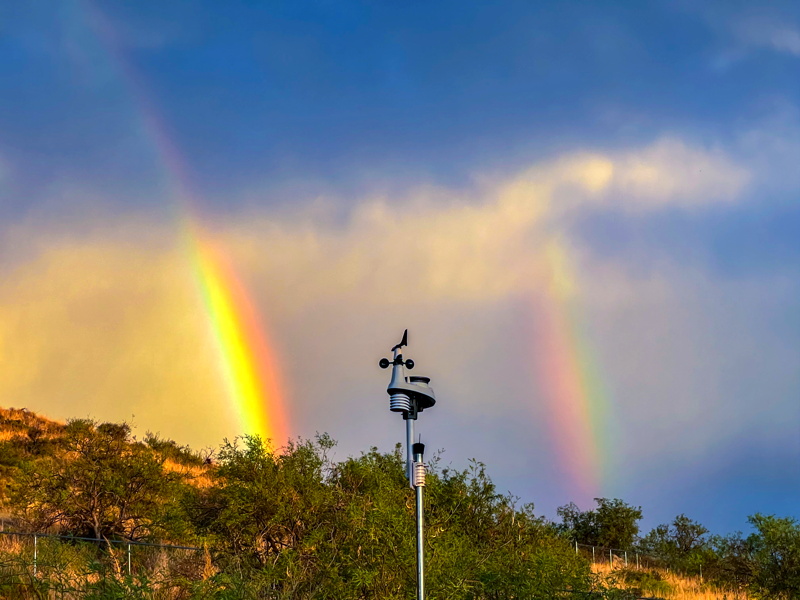
Early Sunday morning, 24 July, a thunderstorm come through (0.28"). At sunrise there was a nice double rainbow in the western sky.
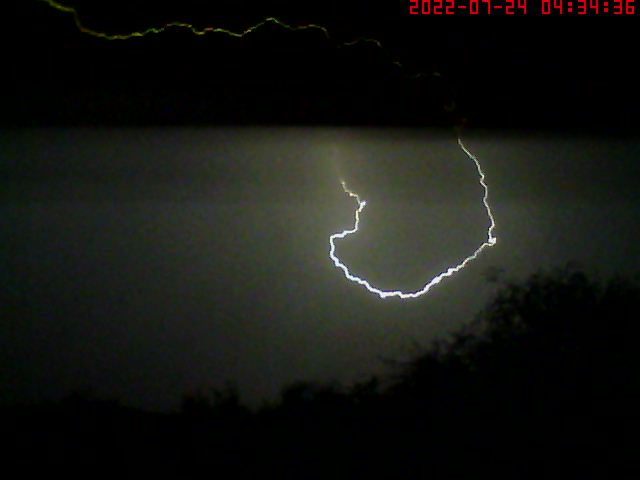
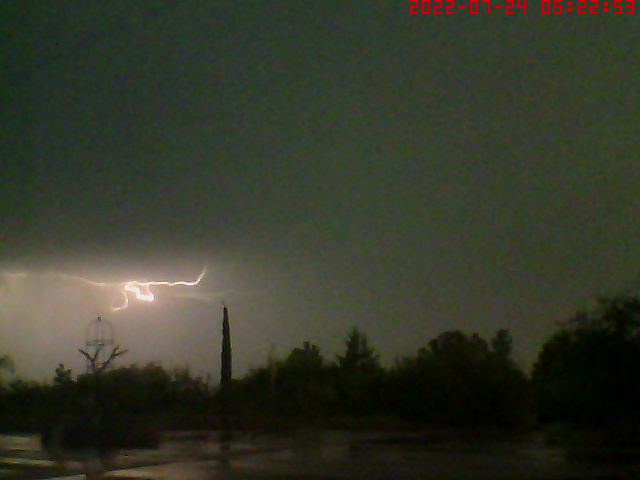
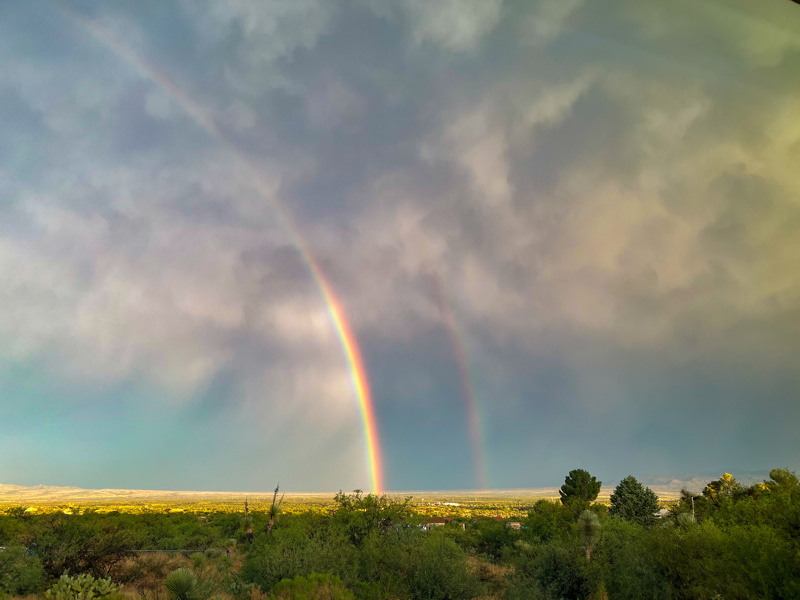
Late Sunday afternoon there was a long period of almost continuous thunder but very little rain here (0.06"). Shortly after sunset Monday evening, 25 July, there were strong thunderstorms in the area but only received 0.05" rain here. Had a light rainshower (0.09") Tuesday afternoon, 26 July. Same pattern Wednesday afternoon, 27 July (0.06"). A brief strong thundershower dropped 0.22" rain in 10 minutes mid-morning on Thursday, 28 July. Total rain for Thursday was 0.29".
Thursday evening I visited a local site at their request and provided some outdoor lighting advice. They plan to pursue needed improvements to become a dark sky observing location as well as solve neighbor lighting complaints.
Before sunrise on Friday, 29 July, another Monsoon storm came through with heavy rain (0.53"). Saturday, 30 July, dawned clear but clouds began appearing mid-morning with thunderstorms in the area beginning mid-afternoon. Only got 0.01" rain here. Sunday, 31 July, dawned mostly clear but storm clouds began appearing mid-day, like this one with a nice anvil top 70 miles to the WSW of Oracle.
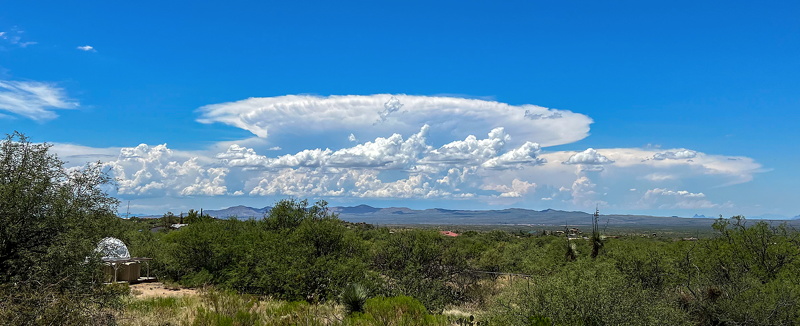
Click or tap on image for larger version
Late Sunday evening had some brief periods of light rain (0.03") from nearby storms.
Storms and cloudy nights are forecast to continue through at least the first week of August.
An update on the Kitt Peak National Observatory wildfire recovery was posted by NOIRLab on 21 July. Followup reports by Tucson television stations KVOA and KGUN have some more details.
I have posted a review of the book Star Mentor. Definitely a good book to read.
25 July 2022 was the 13th anniversary of setting up my SkyShed POD XL5.
As I have mentioned many times, beginning in 1966 as an undergraduate astrophysics student at Indiana University, I worked on the IU Asteroid Program. I was on the Program for four years and even worked there full-time during the summer after graduation in 1970. I was one of several students who would measure star and asteroid positions on 8x10 inch photographic glass plates using the Gaertner Measuring Engine. One of the tasks of this work was to pick suitable stars on the photographic plates that would be used to determine an asteroid's location. This photo of a blackboard in the Program offices was taken in 1988 and shows that my Faintest Star Magnitude record was still listed 18 years after I worked there!
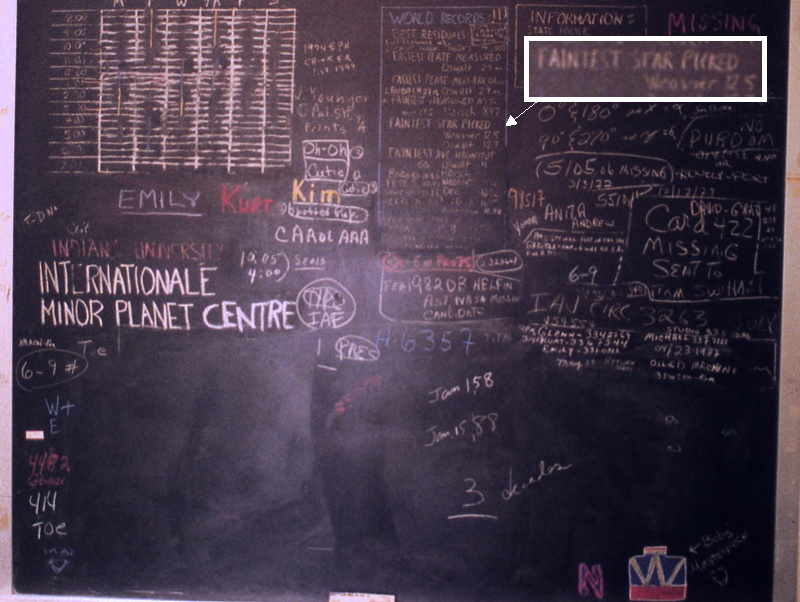
Click or tap on image for larger version
Photo credit Kurt Eberhardt
Comments are welcome using Email. Twitter users can use the button below to tweet this report to their followers. Thanks.
Cassiopeia Observatory Home Page
Copyright ©2022 Michael L. Weasner / mweasner@mac.com. Email Etiquette.
URL = http://www.weasner.com/co/Reports/2022/07/31/index.html
